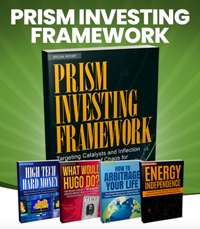 The US economy and financial markets often behave in confounding ways. Something that appears to be obvious never materializes. And something of little apparent prospect becomes a major theme.
The US economy and financial markets often behave in confounding ways. Something that appears to be obvious never materializes. And something of little apparent prospect becomes a major theme.
With little indication, for example, gross domestic product (GDP) may expand in the face of menacing economic fundamentals. Similarly, an extended bear market rally may appear to be a new bull market.
What’s more, when central planners have a heavy hand in extreme market intervention the distortions and false signals are especially puzzling. Prices may avoid logic for extended periods of time.
Will Fed Chair Jay Powell successfully pilot a soft economic landing?
That’s what Marriott CFO Leeny Oberg believes. On the company’s earnings call this week she said, “it now seems more likely that the US economy could have a soft landing.”
“What you’ve seen lately is still really strong employment numbers, increased expectations for GDP growth. You’re also seeing that inflation is calming down, which I think … helps everybody think, ‘Okay, you know what? We could actually have kind of a soft landing without a huge downfall.’” Continue reading







